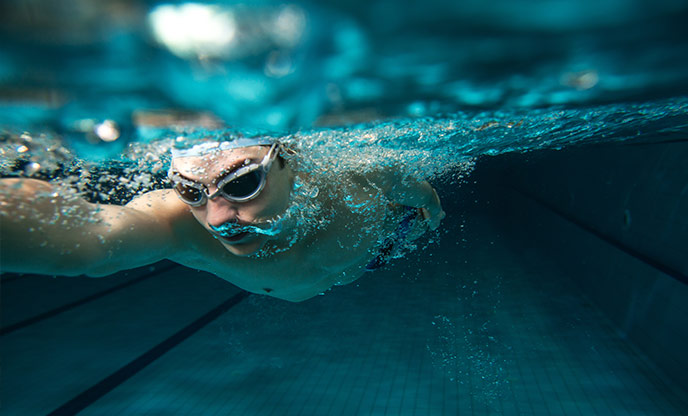
Every type of exercise has its selling points. But swimming is unlike any other aerobic workout in a few important ways. The fact that one is submerged in water means their bones and muscles are somewhat unshackled from the constraints of gravity.
Water is denser than air, so moving through H2O puts more external pressure on limbs than out-of-water training. Even better, that pressure is uniformly distributed. It doesn’t collect in the knees, hips, or the other places that bear most of the burden while exercising with gravity sitting on the shoulders.
A healthy weight maintenance: This makes swimming the ideal exercise for people with osteoarthritis, for whom weight-bearing exercise can be excruciatingly painful. People with the condition, swimming decreases arterial stiffness, a risk factor for heart trouble. It has been found that swim training helps lower blood pressure among people with hypertension. The coolness and buoyancy of water are also appealing to people who are overweight or obese, for whom load-bearing aerobic exercises like running may be too hot or uncomfortable.
Improvised respiratory functioning: How one breathes during a swimming workout is another big differentiator. During a run or bike ride, one’s breath tends to be shallow and they exhales forcefully. Whereas it’s the other way around with swimming. Just breathe in quickly and deeply, and then let the air trickle out. Because the head is underwater when one swims, these breathing adjustments are vital, and they may improve the strength of the respiratory muscles. This kind of breathing keeps the lung alveoli—”the millions of little balloon-like structures that inflate and deflate as they breathe”—from collapsing and sticking together.
A charming appearance: It wouldn’t be fair to not want the body of a swimmer. Swimming fires up more of the body’s major muscle groups than other forms of cardio exercise. Think about it, running or biking, mostly lower body is used. Swimming not only engages the legs, but also recruits the upper body and core—especially lats, the muscles of the middle back, and triceps, the backs of the upper arms. It makes the upper body look tremendous.
A solid-strong back: Working out in a horizontal pose—as opposed to the upright position the body assumes during other forms of aerobic exercise—may be an ideal way to counteract all the time spent hunched over a desk or steering wheel. There’s no hard impact on the back like there is with running, and instead of being bent forward as you would be on a bike, the back tends to be arched slightly in the opposite direction. That may help improve the posture and prevent back injuries and pain that stem from long stretches of sedentary time.
A healthy regulation of happy hormones: This exercise is also linked to many of the same life-extending, heart-saving, mood-lifting benefits associated with other forms of aerobic exercise. And it’s fun, which matters. People tend to enjoy swimming more than running or bike riding. While about half of people who try a new exercise program give up within a few months, people who take up swimming are more likely to stick with it.
For someone who’s absolutely new, it is recommended to start swimming slowly. Don’t try to do too much too early, and focus on proper technique. Consider enlisting the help of an instructor. Start off with 30-minute sessions three times a week, and don’t forget to take frequent breaks. Ease into it and build up. Just like a running program.
